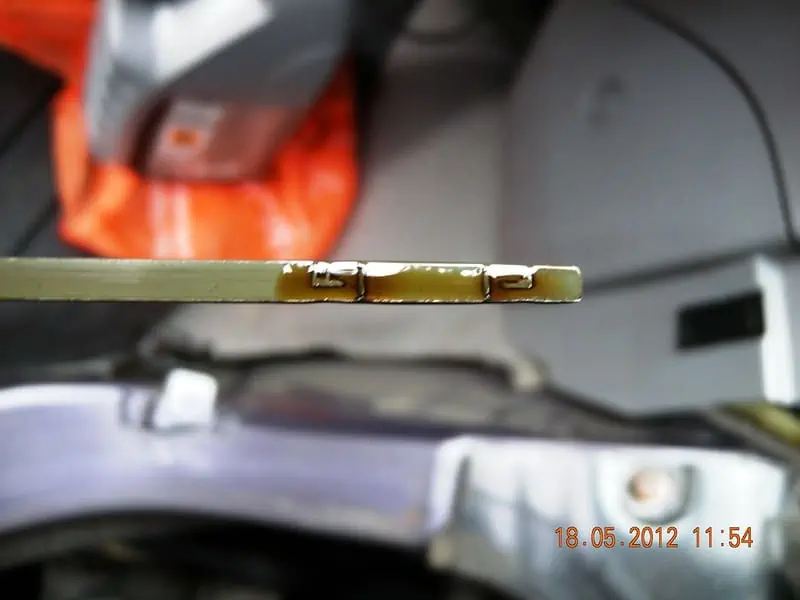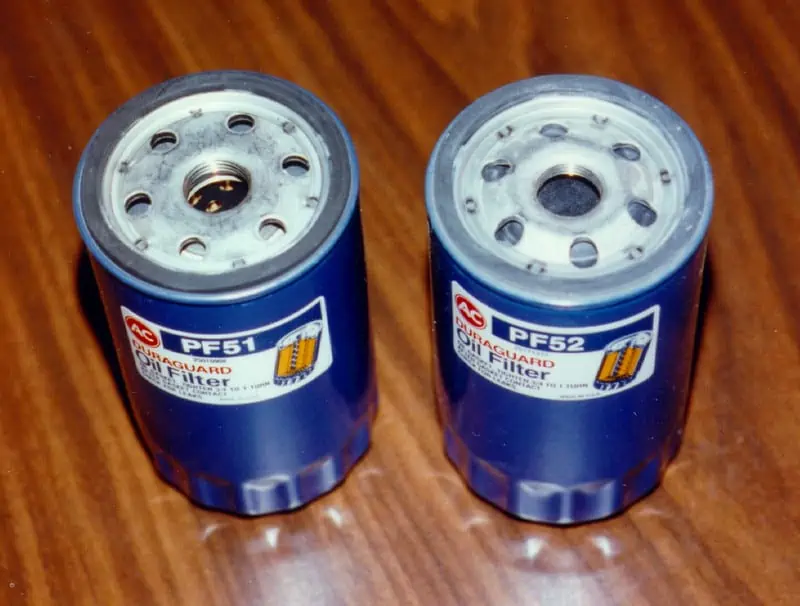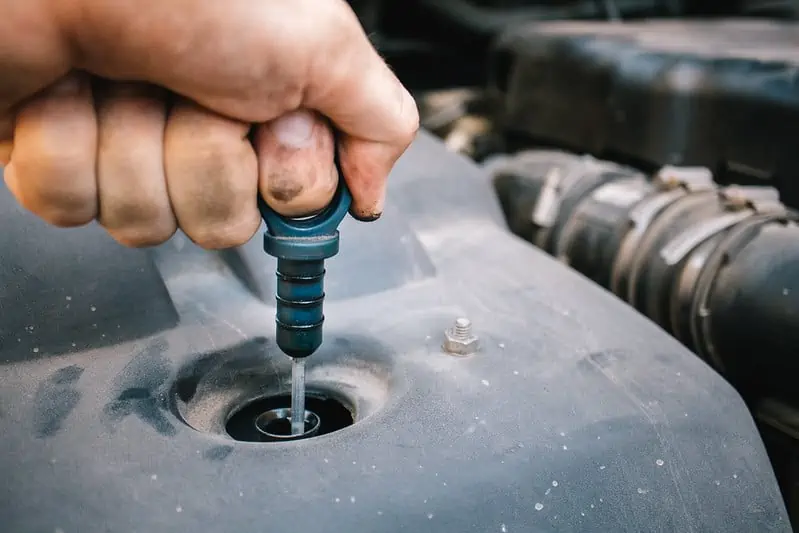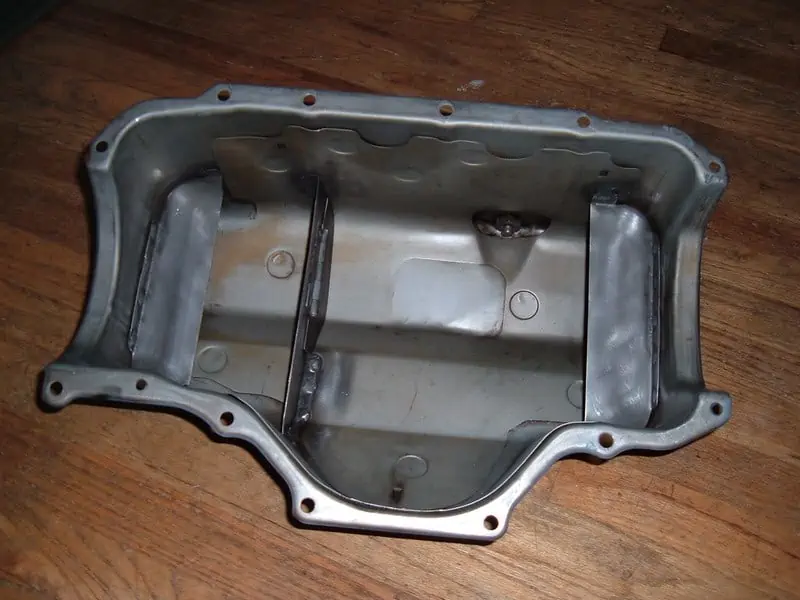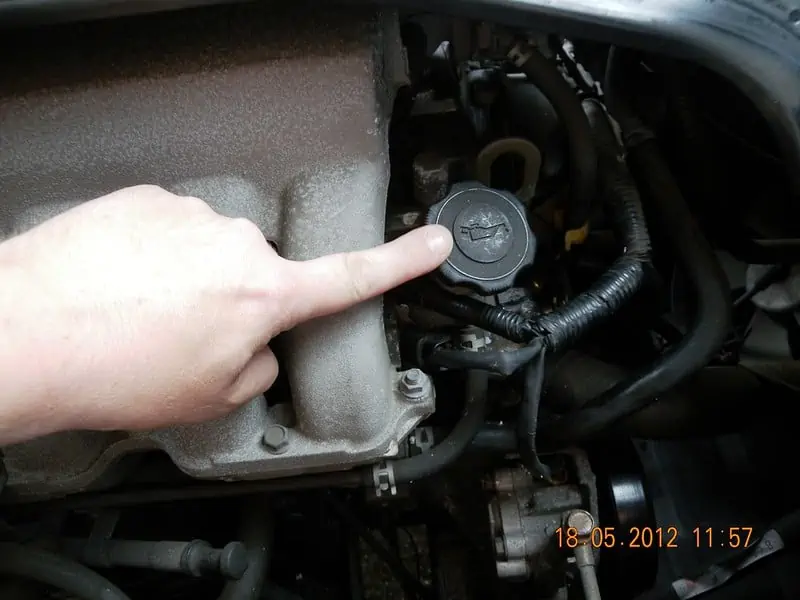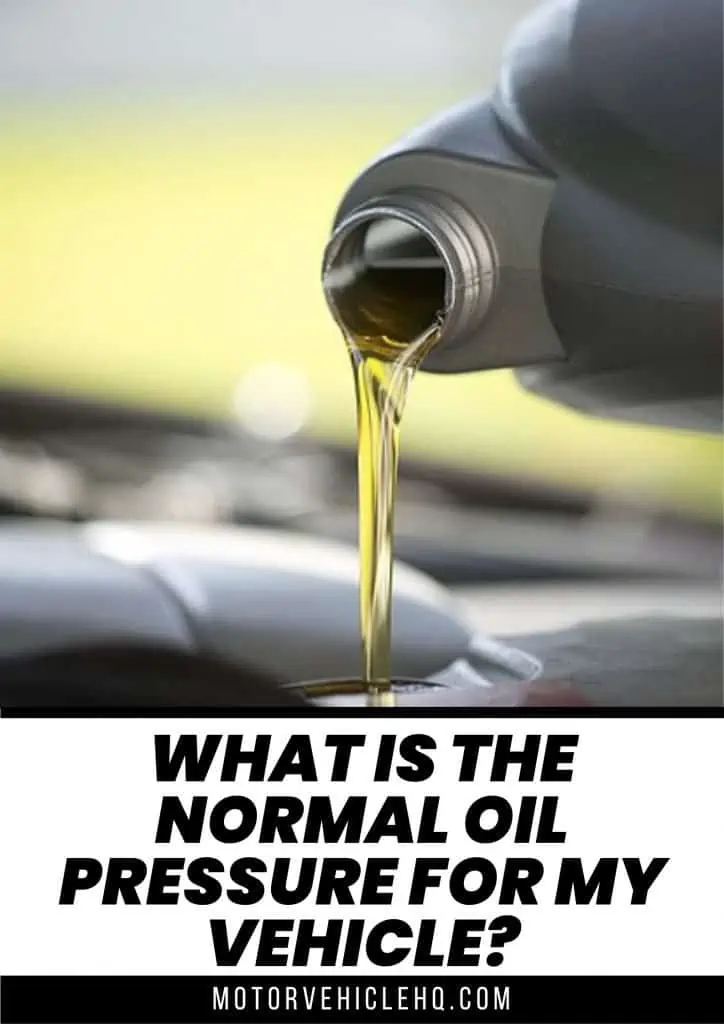Maintaining the oil pressure in your vehicle is a crucial element of maintenance that is frequently overlooked until it is too late. Its significance cannot be overemphasized since it influences the lubrication of your engine’s moving parts. However, simply having oil in your engine is insufficient. The oil pressure in your engine should be high enough to keep the moving parts lubricated but low enough to prevent excessive friction. To find out the oil pressure for your car, you can use a high-pressure gauge or consult your owner’s manual.
The oil pressure in your engine is affected by several factors, including the type of oil you use, the age and condition of your engine, and your driving habits. If you frequently drive in stop-and-go traffic or at high speeds, your oil pressure will be higher than if you mostly drive on the highway. The oil pressure will also be higher when you first start your engine after it has been turned off for a while.
Oil Pressure
Engine oil change by Aaberlanga / CC BY-SA 4.0
Oil pressure is created when the oil in your car is forced through the engine by the oil pump, causing the oil to flow quicker than it typically would and so pressurizing it. For the oil to continue flowing, the pressure must be kept constant, and factors that can affect this include a slack or wear inside the engine and too much gap between two metal parts which will lead to a higher amount of oil needed to fill the gap. An oil pressure gauge is typically used to calculate and display oil pressure on your car’s dashboard. The oil pressure gauge not only tells you about the quantity of oil in your automobile but also provides elementary information on the state of your engine. There are two types of oil pressure gauges, and they are:
- Mechanical Gauges
Mechanical Gauges have been around for almost a century. Mechanical oil pressure gauges are used in both old cars and race cars as they can be more accurate, notifying the driver of an instant alteration in the oil pressure. Mechanical oil pressure gauges use pipes instead of wires to calculate oil pressure. This gauge has a needle display and pours oil into the pipes, displaying the pressure on your dashboard. If you own one of these gauges, you must inspect it regularly to avoid a misinterpretation that could cause catastrophic harm. They range in price from $5 to $30.
- Electrical/Digital Gauge
Electrical Gauges, on the other hand, function differently and are found in modern cars. Rather than a direct connection using a pipe, electrical gauges use a sensor that is screwed into a part of your car engine. They, however, provide a broader range of information than their mechanical counterpart and are less likely to require maintenance. They go for roughly $70 to $100, with labor costs between $20 and $150.
Normal Oil Pressure Range
The normal oil pressure varies between car brands and models, but generally, it is between 25 PSI and 65PSI. As stated earlier, to a large extent, oil pressure is required for the oil to reach all the parts of your car engine. If your oil pressure (shown on the oil pressure gauge) falls outside this range, it is usually considered too high or too low.
Since oil pressure is determined by the amount of resistance it faces, factors like the size of the engine, the diameter of the bores, and the viscosity of the oil cause variations.
High Oil Pressure
Dipstick showing oil level by John C Bullas / CC BY-NC-ND 2.0
High oil pressure occurs when the reading on your oil pressure gauge exceeds 65 PSI, with readings as high as 80 PSI considered excessive and dangerous to your engine. High oil pressure means that oil is impossible to travel through the bores and reach the engine sections that require it.
Causes of High Oil Pressure
To provide a solution to high oil pressure, you need to understand its causes. They include:
Clogged or Blocked Oil Filter
One of the most common causes of high oil pressure is a clogged oil filter. Although this tends to happen when your oil filter is old, it can happen just about anytime too.
Oil filters by Artistmac / CC BY-SA 2.0
Luckily, it can be easily fixed by simply completing an oil change and changing the filter, all of which would cost you about $30.
Faulty Pressure Relief Valve
Because you do not want your engine to reach a certain oil pressure doesn’t mean it won’t. That’s why all cars have a pressure relief valve to relieve your engine of too much pressure. When this Pressure Relief Valve is stuck, it causes the oil pressure to continue rising. The cost of this valve is between $100 and $200, while the cost of labor can be between $ 80 and $160, bringing total costs to an average of $270.
Oil Quality
Old or bad oils have lost their viscosity, making it difficult for them to move through bores. When your oil has difficulty moving, the oil pressure rises. If you also use oil thicker than you should, it will cause your oil pressure to rise abnormally. To fix this, you must change both your oil and its filter.
Blocked Oil Passage
The same way your oil filter can get blocked is the same way oil passages can be blocked with dirt. When this happens, getting rid of accumulated grime can be a challenge. Fortunately, blocked oil passages are rare.
Cold Engine Temperature
If the temperature of your car engine turns cold, either due to the weather or because it hasn’t been operated in a while, it might momentarily cause high oil pressure.
Symptoms of High Oil Pressure
Checking engine oil level using oil dipstick by Ivan Radic / CC BY 2.0
The most common sign that your car is experiencing high oil pressure is when it shows on your gauge. Unfortunately, not all cars have an oil gauge. If your vehicle does not, other signs to look out for.are:
Oil Leaks
If you have noticed a small oil leak coming from your engine, it could be a sign that you have high oil pressure. The leak may be coming from the gasket between the engine and the oil pan or around the oil filter itself due to blown out seals. These seals usually blow out when the oil pressure range of your vehicle has been exceeded.
Engine Overheating
If your car engine has high oil pressure, it means that there is a high chance that oil does not flow to all the parts it should. This causes your engine to overheat. You must note that engine overheating has other causes such as a problem with the cooling engine and the inability of heat to escape the engine compartment, faulty radiator fan, clogged coolant hose, and so on. The longer you drive with high oil pressure, the higher the chances of your engine overheating.
Engine Damage
Because high oil pressure limits the parts of your engine that oil can reach, friction is greatly increased, and with friction comes heat which is bad for your combustion engine. If left untreated for a long time, high oil pressure can make your engine damaged. When this happens, the only thing you can do is buy a new engine which starts around $4,000 for a 4-cylinder, $5,500 for a V6, and $7,000 for a V8, excluding labor costs.
How to Fix High Oil Pressure
The solution to high oil pressure usually depends on its cause. If it is a clogged oil filter or of bad oil quality, you’ll have to change the oil as well as its filter. If the cause is a faulty Pressure Relief Valve, you’ll have to change it too. If you notice signs of high oil pressure in your car, you should take it to the mechanic as soon as possible. High oil pressure can cause severe damage to the engine of your car if not promptly addressed.
To prevent high oil pressure, change your oil filter every 5000 miles. This will help to keep your oil clean and ensure that your car continues to run efficiently. Additionally, Keep your car regularly maintained. This ensures that the engine is functioning properly and decreases the likelihood of future problems.
Low Oil Pressure
So far, it has been well established that the reason why your engine needs oil is to protect parts of the engine from coming in contact with each other, leading to friction.
Low oil pressure, just like high oil pressure, makes the parts of your engine come in contact with one another and in severe cases, leads to the breakdown of your car engine.
If your engine pressure is below the normal range or 20PSI, or the oil sensor on your dashboard flashes a light, it requires immediate attention.
Causes of Low Oil Pressure
There are a few different things that can cause low oil pressure in your car. The most common causes are:
Low Oil Level
The most typical cause of low oil pressure is when your car’s oil level falls below the minimum dipstick line. This can happen even if you just changed your oil because engines continue to burn oil faster as a result of piston ring wear, seal leakage, and so on, depending on the age and condition of your automobile.
Low Oil Viscosity
Vehicle manufacturers prescribe specific viscosities in the owner’s manual. This is because choosing a viscosity lower than what was advised results in less flow resistance, which your car’s pressure gauge can register as low oil pressure.
Dirt in the pickup pipe
Another possible cause of low oil pressure is the accumulation of dirt and grime in the pickup pipe from the oil pan to the oil pump.
Oil pan by Lovz2boost / CC BY-NC 2.0. The oil pan is a component attached to the underside of the engine whose primary purpose is to store the oil that gets pumped throughout the engine to lubricate it. It also collects some of the residues picked up by engine oil as it passes through the engine.
If the accumulation of dirt prevents enough oil from going up the pickup pipe, it can cause low oil pressure.
Defective Oil Pump
Your car might be experiencing low oil pressure due to the failure of your oil pump. Oil pump failure can be a result of incorrect installation, poor oil maintenance, oil contamination, and inadequate oil level and simply wear out with time and usage. If this is the cause of your low oil pressure, you have to fix it. Depending on the type and model of your vehicle, a new oil pump costs between $100 and $300, with labor costing around $100.
Defective Oil Pressure Gauge
If your car’s Oil Pressure warning light illuminates even after you’ve confirmed that the oil level is sufficient, the problem could be caused by a defective oil pressure gauge. A new oil gauge costs between $20 and $100.
Symptoms of Low Oil Pressure
Under normal conditions, your vehicle should notify you of a low oil level via an audible alert. These alerts sound when your engine oil is low, or empty, and they can signal everything from an impending engine failure to a worn-out washer fluid system. If you receive an oil level alert, but the problem is not related to car fluids, it is most likely a sign of low oil pressure. Also, these alerts could appear on your car’s dashboard as a warning light activated by your oil sensor. Other symptoms include:
Reduced Engine Performance
Low oil pressure can cause problems with engine performance, including reduced fuel economy and decreased acceleration. If you notice changes in your miles per gallon, or if your car starts losing power suddenly, sometimes leading to rough idling, it could be as a result of low oil pressure.
Burning Oil Smell
If the oil pressure in your engine is low, a chemical called sulfur could be produced. This can cause a burning smell from your engine. Sometimes this symptom is accompanied by visible smoke coming from the tailpipe.
How to Fix Low Oil Pressure
Engine oil filler cap by John C Bullas / CC BY-NC-ND 2.0
There are several different things you can do to fix low oil pressure. One of the most common solutions is changing your oil to a higher-quality one. Some higher-quality oils have additives in them that help to extend the life of the oil and allow them to work more effectively. Another solution is refilling your oil more often. This can help ensure that your car always has enough oil to run properly and prevent it from running low on oil. The best way to ensure this is to schedule regular oil changes.
When Should You Change Your Oil Pressure Gauge?
When your Oil Pressure Gauge becomes defective, there are usually tell-tale signs. Although it might seem trivial, ignoring these signs can cause more problems as you would have no idea about the state of your engine’s oil pressure. These signs can be pretty obvious such as:
Oil Pressure Gauge Not Reading
When your oil pressure gauge remains at the bottom regardless of engine stage, it indicates that the oil pressure gauge has failed.
Oil Pressure Gauge Reading Too Low
When you just turn on your car, it is normal for the pressure gauge to have low readings, but if you notice that the gauge remains low, even when you are cruising on the highway, it means your oil pressure gauge is broken.
Oil Pressure Gauge Reading Too High
When your car idles or is turned off, it is expected that your gauge reads 0 or has a low reading. If you notice that your oil pressure gauge has a high reading even after parking your car, it means it no longer works.
The cost of changing an oil pressure gauge has been discussed alongside the different types of oil pressure gauges.
Conclusion
If your engine starts smoking or making unusual noises, it is probably time to replace the oil and filter. For your car to work as it should, the oil in your vehicle has to be regulated and pressurized. This is what brings about the concept of engine oil pressure.
One of the reasons why your car’s combustion engine can last many years and hundreds of kilometers is because of this lubrication. Less friction means less heat, and less heat increases your engine’s efficiency.
Additionally, if the oil pressure in your car exceeds or goes below its recommended oil pressure, it is essential to see a mechanic as soon as possible to avoid more severe problems and keep your engine functioning optimally. It is preferable to spend a few bucks now than thousands afterward.
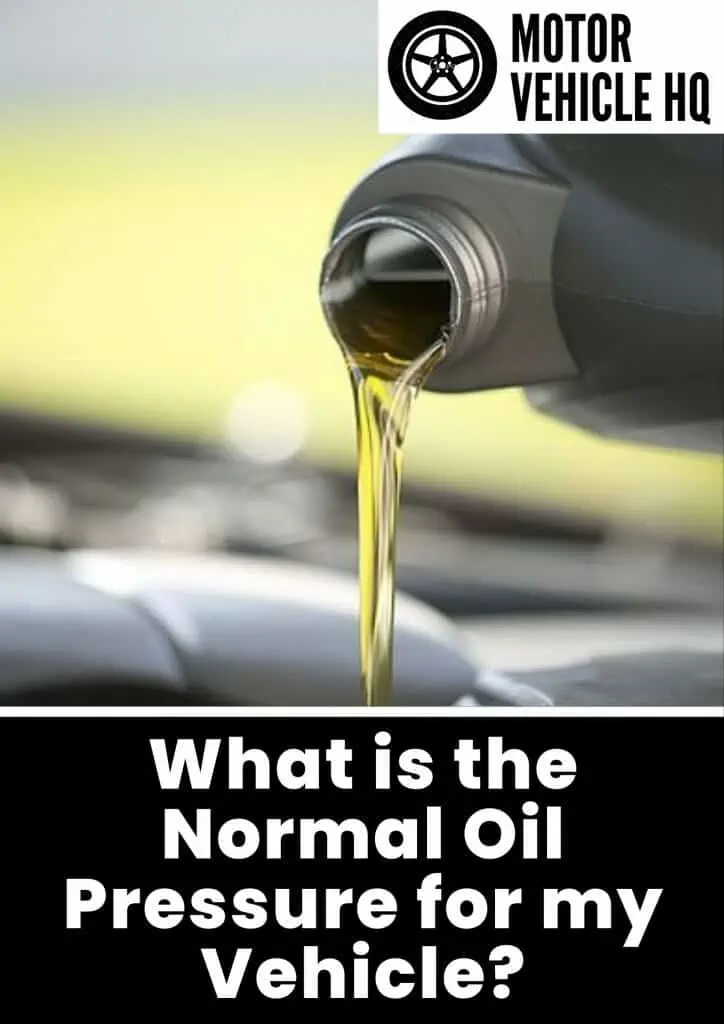

Jim Wicks is the founder of MotorVehicleHQ. With over two decades of experience in the automotive industry and a degree in Automotive Technology, Jim is a certified car expert who has worked in various roles ranging from a mechanic, car dealership manager, to a racing car driver. He has owned more than 20 cars over the past 15 years. Ask him about any vehicle you see on the road and he can tell you the make, model and year. He loves the aesthetics of all things cars, and keeps his vehicles in pristine condition.
In his free time, Jim enjoys getting his hands dirty under the hood of a classic car or taking long drives along the country roads. His favorite car? A 1967 Shelby GT500, a true classic that, according to Jim, “represents the pure essence of American muscle.”

